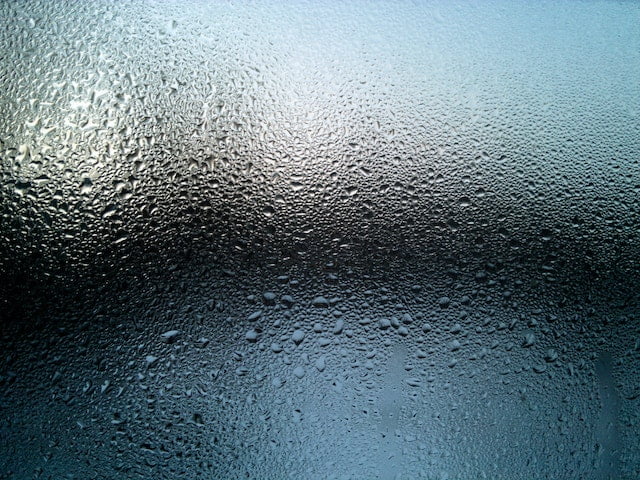
Moisture in your home can be a real problem. It can cause mold and mildew growth, rot wood surfaces, and create an environment that is not conducive to living. Not to mention the health risks associated with high humidity levels in the air. So you must understand what causes moisture problems in your home, how to identify them, and how to solve them. This article will discuss common sources of moisture buildup in homes, telltale signs of moisture problems, and provide actionable solutions for dealing with moisture issues once they arise.
Table of Contents
What Causes Home Moisture Problems?
Knowing what causes home moisture problems is important to consider when looking after a home. Uncontrolled moisture can cause damage to the structure of your home, lead to mold growth and create unhealthy air quality. There are many causes of moisture problems in a home, including inadequate ventilation, leaking pipes, high humidity levels, and even activities like cooking and showering.
Common causes of home moisture build-up include improper waterproofing installation or maintenance, plumbing leaks or breaks, poor waterproofing design, roof damage caused by storms or age, and inadequate ventilation. Improper waterproofing can cause a buildup of moisture that will eventually seep through cracks in the foundation or walls, creating dampness and humidity. Plumbing leaks can also result in excessive water accumulation that is difficult to eliminate without proper waterproofing and foundation repair techniques. Poor waterproofing design can lead to water infiltrating through cracks and seams, leading to a damp and humid environment in the home.
Roof damage from storms or age can also cause moisture build-up and eventual water damage inside the home. Without proper waterproofing, excessive moisture can enter and accumulate inside the home, leading to problems such as mold, mildew growth, wood rot, and other types of water damage.
Inadequate ventilation is another common cause of home moisture build-up. With inadequate air circulation throughout the house, excess humidity will remain trapped, causing condensation on windows, walls, and ceilings leading to further accumulation of moisture in areas that are not waterproofed properly. Ventilation is key to preventing moisture problems in the home because it will allow fresh air to circulate, reducing the buildup of dampness and humidity.
Leaking pipes are another common cause of excessive humidity in the home. If a pipe leaks, water can seep into the walls and floorboards of your home, creating an ideal environment for mold growth. Identifying any leaks early and fixing them as soon as possible is important.
High humidity levels can also be a source of home moisture problems. Humidity levels should remain between 30% and 50%. If humid air enters the house or the humidity level rises above that range, condensation will start appearing on your home’s windowsills, floors, and other surfaces. This can be caused by activities such as cooking or bathing, but it can also be caused by external factors such as weather conditions or poorly insulated buildings.
Finally, activities like cooking, showering, and washing clothes all add to the indoor moisture levels of a home. During these activities, steam is released into the air that can quickly build up if not vented properly. This excess humidity can then cause condensation on walls and other surfaces which can lead to mold growth and structural damage.
What Are The Signs of Home Moisture Problems?
Common signs of home moisture problems include wet spots on walls, floors, and ceilings; condensation or water droplets on windows; musty odors; peeling paint or wallpaper; buckling floors; discoloration of walls and/or ceilings; damaged drywall or insulation; standing water in basements or crawl spaces; and excessive humidity levels. If you notice any of these signs, contact a professional to investigate further as soon as possible. They will be able to accurately diagnose the problem and give you advice on how best to address it.
Solutions for Home Moisture Problems
Various factors, including leaks, condensation, and inadequate ventilation, can cause home moisture problems. If not addressed, these issues can lead to serious problems like mold and mildew growth, wood rot, and structural damage.
Fortunately, several solutions are available to help deal with home moisture problems. These include fixing leaks and other sources of water infiltration, increasing ventilation, and using dehumidifiers or other moisture-control devices.
Sealing any gaps around windows and doors
Sealing gaps around windows and doors is a great solution for home moisture problems. It prevents the infiltration of moist air from outside, which can lead to mold growth, a decrease in air quality, and high energy bills. This simple solution also helps keep warm air inside during the winter months and cool air inside during the summer months. Sealing gaps around windows and doors create an effective barrier against outdoor elements that can cause condensation on surfaces like walls or ceilings if not properly sealed. Additionally, sealing any gaps reduces sound transfer from outside, providing more privacy and a peaceful environment within your home.
Addressing leaks and other sources of water infiltration
Addressing leaks and other sources of water infiltration is one of the best solutions for home moisture problems. Leaks and other sources of water infiltration can lead to mold growth, increased humidity, and other dangerous health risks in your home. In addition to these potential dangers, costly water damage may result from unaddressed leaks. Water infiltration can damage drywall, insulation, carpets and flooring, furniture, and more.
The best way to address leaks and other sources of water infiltration is by fixing the source of the problem as soon as possible. This may include repairing broken pipes or faucets, sealing windows and doors to prevent drafts, or installing a sump pump system in areas prone to flooding. Once any repair work has been completed, it’s essential to do regular maintenance and inspections to ensure that any potential future issues are caught early on.
Increasing ventilation
Increasing ventilation is one of the most effective ways to manage and reduce home moisture problems. Ventilation helps eliminate excess humidity in your home, which can cause mold and mildew growth, musty odors, and even structural damage if left unchecked. The air exchange created by increased ventilation improves the overall air quality and helps to keep harmful pollutants at bay. Additionally, it can help reduce the build-up of condensation on cold surfaces such as windows during winter months.
Using dehumidifiers
Dehumidifiers are a great solution for home moisture problems. They help reduce humidity levels and combat the growth of mold and mildew, which can cause structural damage to your home and increase the risk of allergies and illnesses. In addition, dehumidifiers can help reduce other health-related issues such as dust mite allergies, respiratory illness, asthma symptoms, and more—all while reducing energy costs by eliminating the need to cool overly humid air in summer months. Dehumidifiers can be installed in any home area where moisture is a problem, such as bathrooms and basements. They help reduce humidity levels by pulling moisture from the air, which collects in a container that needs to be emptied periodically. Some dehumidifiers even have built-in alarms alerting when it’s time to empty the tank.

Home moisture problems can be an unpleasant surprise if they go unnoticed for too long. Knowing how to recognize signs of excess moisture buildup, identify potential causes, and take actionable steps to address them, can help you avoid serious damage and health hazards in your home. With the right knowledge and solutions, you can keep your home safe and comfortable for years.





